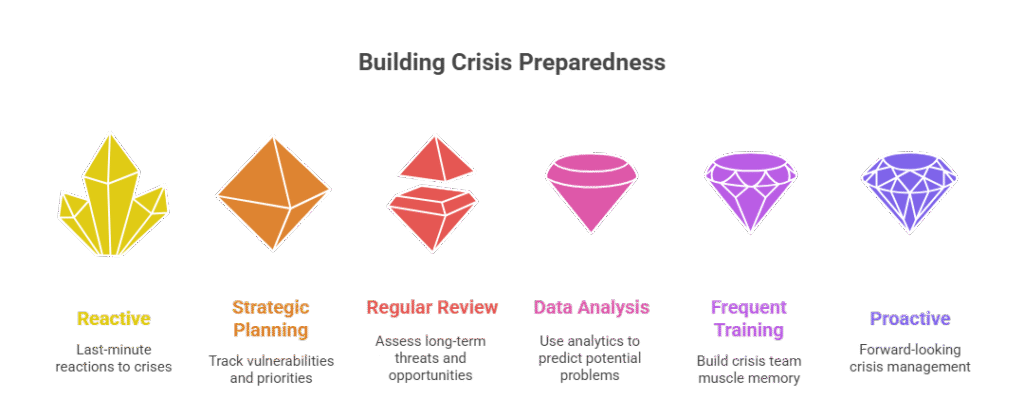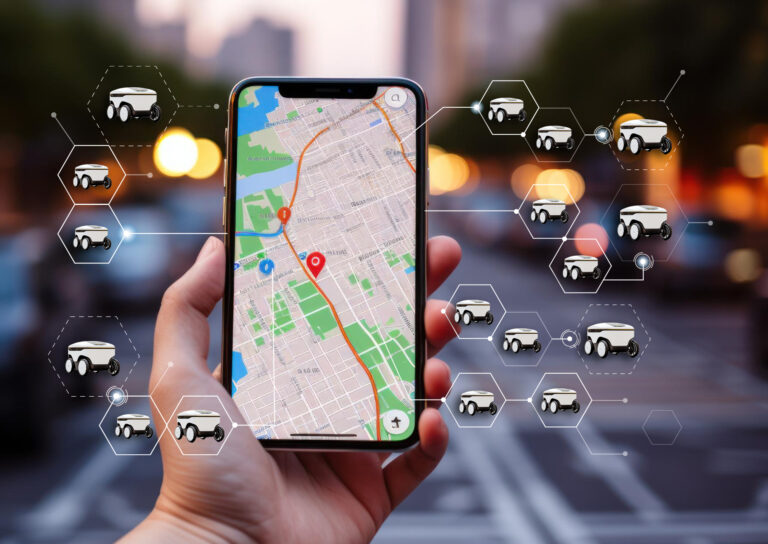Today’s crisis environment is faster and more unpredictable than ever before. Companies can no longer rely on outdated crisis manuals or hope to control their message through a single channel. Instead, they face a constant flood of misinformation, viral falsehoods, and coordinated attacks that can jeopardize their reputation in minutes.
This change calls for a new way of thinking about crisis communication – one that moves from paralysis and confusion to preparedness and swift, smart response.
This playbook, based on Cyabra’s live event “From Paralysis to Preparedness: Defending Brands and Executives in the Age of Disinformation”, shares insights from leading crisis and communications experts, and breaks down what brands and executives must do to defend themselves from those ongoing viral storms.
This guide will cover:
- The New Crisis Environment & Why Speed is Everything
- Understanding the Loss of Narrative Control
- Spotting Misinformation Before It Escalates
- The Difference Between Problems, Issues, and Crises
- Pre-Bunking and Verification Tactics
- Mobilizing Trusted Allies
- Building Agile, Real-Time Crisis Frameworks
- From Reaction to Prevention
The New Crisis Environment
There was a time when being crisis-ready meant dusting off a binder full of plans from the shelf. Today, the speed at which mis/disinformation spreads demands 24/7 vigilance and action. Platforms like Telegram, TikTok, and Instagram can stir up false narratives in seconds, making it harder to catch problems before they blow up.
The phrase to remember here is “60 seconds is the new first hour.” There is barely any delay between a damaging rumor or attack and public fallout. This means crisis teams need to catch whispers before they become roars. Passively monitoring the environment is no longer an option. Brands must take an active role in spotting, analyzing, and responding to threats as they emerge.
To summarize the changes in the crisis landscape:
- Speed is key. You don’t have hours to respond, you have minutes.
- Anyone can spread misinformation. A unhappy customer or someone with a vendetta can cause real damage.
- You don’t control the story. It’s harder to correct false information when it’s spreading online.

Loss of Control Over the Narrative
One of the biggest shifts is that brands don’t fully control their story anymore. Gone are the days when a company could issue a statement, update a website, and consider the matter done. Now, information moves faster than official channels and often originates from unexpected corners – employees, customers, or even family members might hear the news before the company is aware.
In the past, traditional communication was the ruler: Controlled press releases, official websites, and trusted media channels. Today’s reality includes viral social media, opinion-based journalism, shrinking newsrooms that juggle multiple beats, and misinformation that could be spread by anyone, including disgruntled insiders or activist groups.
This environment makes it essential for crisis teams to verify information quickly and be ready to act in minutes.
Sorting Signal from Noise
The huge volume of data available makes it tempting for teams to freeze up. The question, “what’s the difference between signal and noise?” is crucial. Crisis communicators must focus on the key issues that truly threaten the brand and not get bogged down chasing every alert.
Different organizations react differently to similar levels of threat. Some monitor obsessively and respond to any sign of trouble, while others take a more hands-off stance. Understanding the culture and risk tolerance of your organization affects how you handle early warning signs and decide when to respond.
The Difference Between Problems, Issues, and Crises
Not every challenge demands a full crisis response. Classifying what you are facing is critical:
- Problems are operational glitches that can be fixed quickly (like an outdated policy or a one-off complaint).
- Issues are emerging situations that have potential to cause trouble if ignored.
- Crises are full-blown threats that immediately require coordinated, high-level response.

Verifying & Pre-Bunking: Fighting Misinformation Before It Takes Root
Verifying facts fast is essential. For example, one executive recounted a situation where a former employee’s partner was wrongly denied benefits. Within 32 minutes of learning about it from a reporter, the brand had fixed the policy and communicated the change proactively. This quick action turned a potential crisis into a positive story.
That story highlights a key mantra: “Before you can say something, you have to do something.” Responding without addressing the underlying problem only makes matters worse.
Pre-bunking is an approach designed to surface and correct misinformation before it starts damaging your brand. Unlike reactive responses, pre-bunking is about laying informational groundwork in advance.
This is especially important now because AI systems like large language models (LLMs) – think ChatGPT and others – are becoming primary sources of quick information. These AI tools rely heavily on whatever information is available online and trust certain sources to inform their answers. These sources may include:
- Trade industry publications (often overlooked by companies but heavily weighted by AI)
- Company websites and official documents
- Influencers and third-party voices trusted by your stakeholders
Companies need to put factual, up-to-date content in places where AI tools can find it to influence what they “know” about the brand. This isn’t a “set it and forget it” task; it requires constant monitoring because AI knowledge changes quickly.
Rallying the Right Allies
Third parties such as industry advocates, influencers, and employees have more credibility than corporate spokespeople. Empowering these groups to share accurate information helps beat misinformation, as they can counter falsehoods with confidence in conversations with friends, family, or online.
Tips for engaging employees during a crisis:
- Keep channels open and transparent
- Provide easily digestible facts and talking points
- Encourage sharing accurate information with personal networks
- Offer dedicated spaces for employees to raise concerns and get updates
The New Crisis Playbook
Traditional scenario-based playbooks can’t cover every eventuality anymore. The number and variety of potential crises mean teams need a more flexible approach. A crisis response framework today looks more like a set of adaptable guidelines than rigid scripts. The focus is on speed, clarity, and knowing who has the authority to make calls.
For example, CVS Health’s comms team developed a framework that includes:
- What societal issues the company will comment on
- What topics to avoid
- When to escalate decisions to the executive level quickly
At the end, a good crisis response framework must be customized per company and built according its unique aspects and features.
Predicting and Preventing Crises
Many organizations move from reacting at the last minute to a more forward-looking approach. Here’s how they can start:
- Create a simple strategic plan and issues heat map that tracks vulnerabilities and priorities over time.
- Regularly step back from urgent day-to-day fires to review long-term threats and opportunities with trusted advisors.
- Use data and predictive analytics to show leadership what could happen if problems go unchecked.
- Run short, frequent training sessions with crisis teams to build muscle memory. Even 30 minutes a month helps.
Surveys show many CEOs have little knowledge of their crisis plans. Organizations should close this gap by building ownership and accountability. The message from experts is clear: if you can improve preparedness, start today.
Training tips:
- Don’t rely solely on one big annual drill
- Simulate realistic scenarios, including off-hour and holiday incidents
- Involve cross-functional teams – legal, security, communications, and leadership

Final Thoughts: Adapting for Today’s Reality
Today’s crisis response is about constantly adapting to a world where information flows in unpredictable ways and speed is critical. Brands must embrace new channels, work with a broader community of influencers, and leverage real-time data to defend their reputations. The best-prepared organizations don’t just survive crises – they learn from each one and come back stronger.
If you want your next step in crisis readiness, start with understanding your risks, gathering solid data, building flexible plans, and practicing often. The time to prepare is before a crisis lands at your doorstep.
Cyabra’s live event “From Paralysis to Preparedness: Defending Brands and Executives in the Age of Disinformation” guest starred several leading experts in the field:
- Carreen Winters: President, Corporate Reputation at MikeWorldWide
- Kathryn Metcalfe: Former CCO at CVS and Visiting Professor at NYU
- Ray Kerins: CEO of The Next Solutions Group


